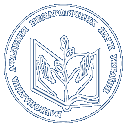- Semerikov, Serhiy O. (orcid.org/0000-0003-0789-0272), Teplytskyi, I.O., Yechkalo, Yu.V. (orcid.org/0000-0002-0164-8365) and Kiv, A.E. (2018) Computer Simulation of Neural Networks Using Spreadsheets: The Dawn of the Age of Camelot Proceedings of the 1st International Workshop on Augmented Reality in Education Kryvyi Rih, Ukraine, October 2, 2018 (2257). pp. 122-147. ISSN 1613-0073
|
Text
paper14.pdf - Published Version Download (1MB) | Preview |
Abstract
The article substantiates the necessity to develop training methods of computer simulation of neural networks in the spreadsheet environment. The systematic review of their application to simulating artificial neural networks is performed. The authors distinguish basic approaches to solving the problem of network computer simulation training in the spreadsheet environment, joint application of spreadsheets and tools of neural network simulation, application of third-party add-ins to spreadsheets, development of macros using the embedded languages of spreadsheets; use of standard spreadsheet add-ins for non-linear optimization, creation of neural networks in the spreadsheet environment without add-ins and macros. After analyzing a collection of writings of 1890-1950, the research determines the role of the scientific journal “Bulletin of Mathematical Biophysics”, its founder Nicolas Rashevsky and the scientific community around the journal in creating and developing models and methods of computational neuroscience. There are identified psychophysical basics of creating neural networks, mathematical foundations of neural computing and methods of neuroengineering (image recognition, in particular). The role of Walter Pitts in combining the descriptive and quantitative theories of training is discussed. It is shown that to acquire neural simulation competences in the spreadsheet environment, one should master the models based on the historical and genetic approach. It is indicated that there are three groups of models, which are promising in terms of developing corresponding methods – the continuous two-factor model of Rashevsky, the discrete model of McCulloch and Pitts, and the discrete-continuous models of Householder and Landahl.
Downloads
Downloads per month over past year
Actions (login required)
 |
View Item |




